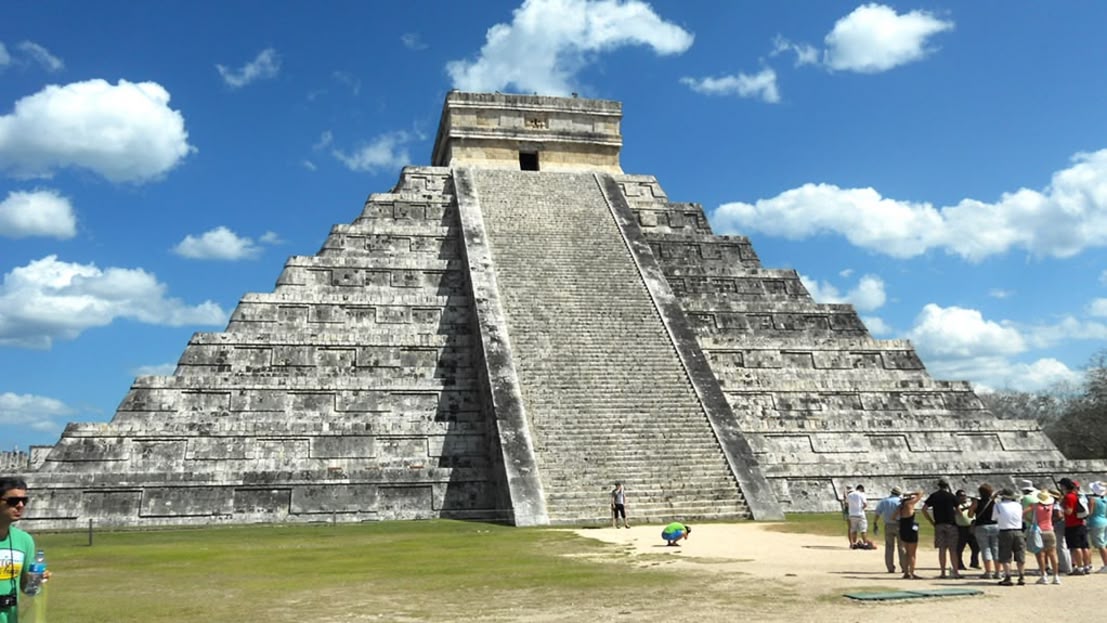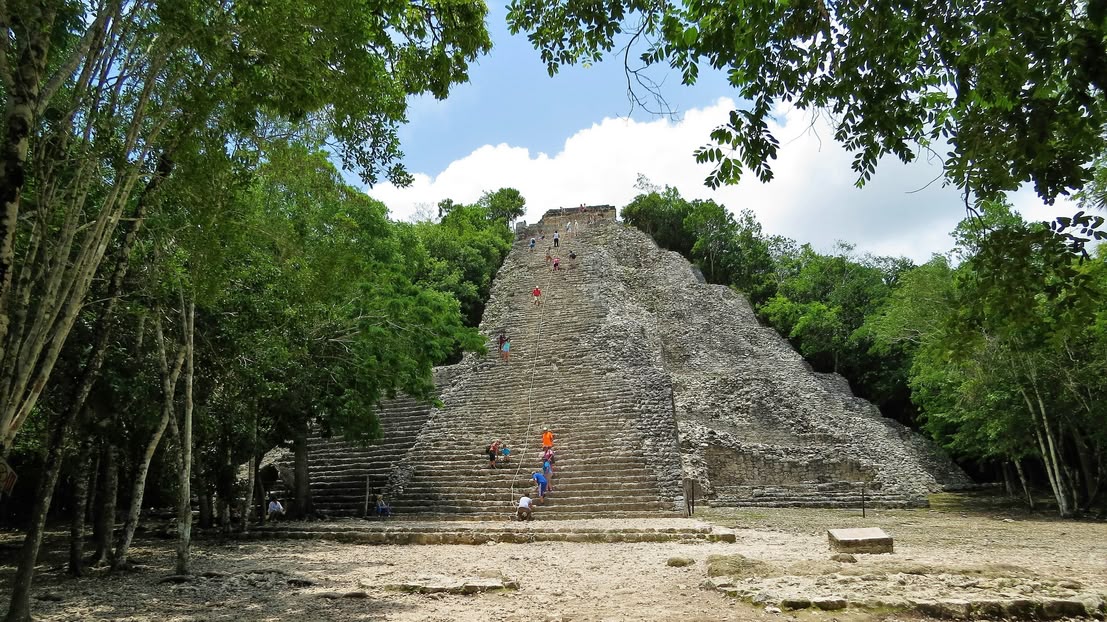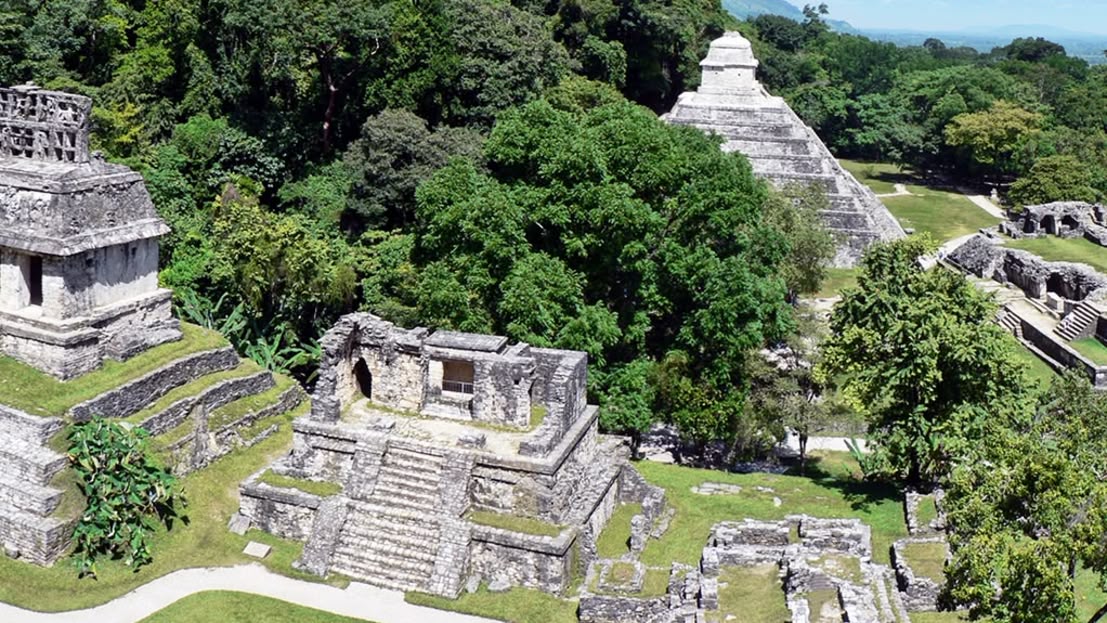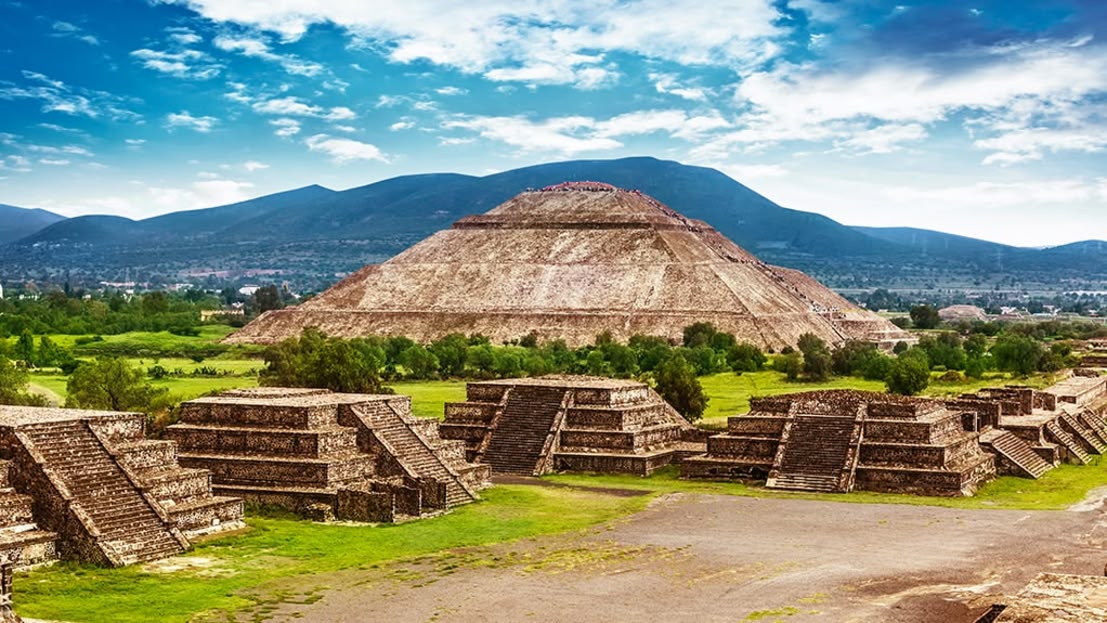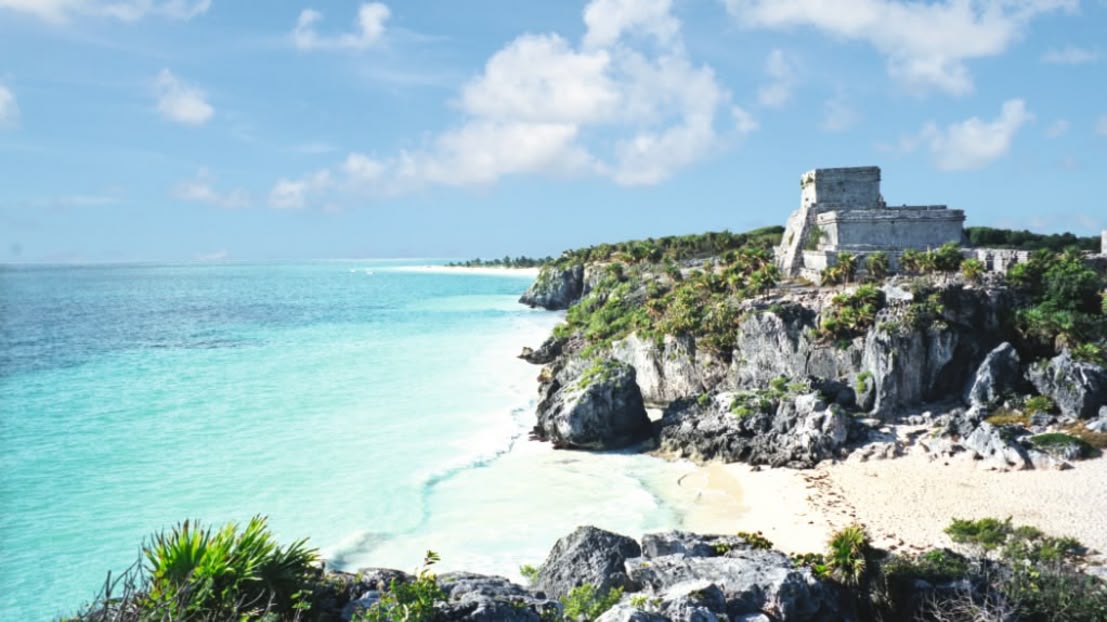Masterpieces of an ancient civilisation
Mayan temples are impressive architectural masterpieces of the Mayan civilisation, which experienced its heyday between 250 and 900 AD. These sites are not only religious places, but also an expression of the Maya Mexico's advanced knowledge of maths, astronomy and architecture. The Mayan temples in Mexico, such as Chichén Itzá, Tulum and Palenque, are home to steep pyramids, elaborate carvings and complex religious ceremonies that were considered a bridge between the earthly and divine worlds.
The Mayan pyramid El Castillo in Chichén Itzá is a world-famous example of this skill and attracts visitors every year who are interested in Mayan ruins and want to find out when the Mayans lived and how their culture developed. In contrast to this are the Aztec temples, which are mainly found in central Mexico. Today, the Mayan temples are a UNESCO World Heritage Site and offer a fascinating insight into the history of this unique civilisation.
Image gallery Mayan temples
History of the Mayan civilisation
The Maya civilisation flourished between 250 and 900 AD in Mesoamerica, particularly in what is now Mexico, Guatemala, Belize and Honduras. It developed from small communities into one of the most advanced civilisations of the ancient world, known for its impressive cities, complex social structures and profound astronomical knowledge. The heyday, also known as the Classical Period, was characterised by monumental buildings, advanced agriculture and a rich cultural life. From around 900 AD, the Maya began to decline in the lower regions, which is attributed to environmental changes, overpopulation and internal conflicts.
Mexico round trips - culture, nature, history

Mexico Día de Muertos
- World-famous Mexican festival of the dead
- Archaeological sites of Oaxaca
- Cartagena's historic old town
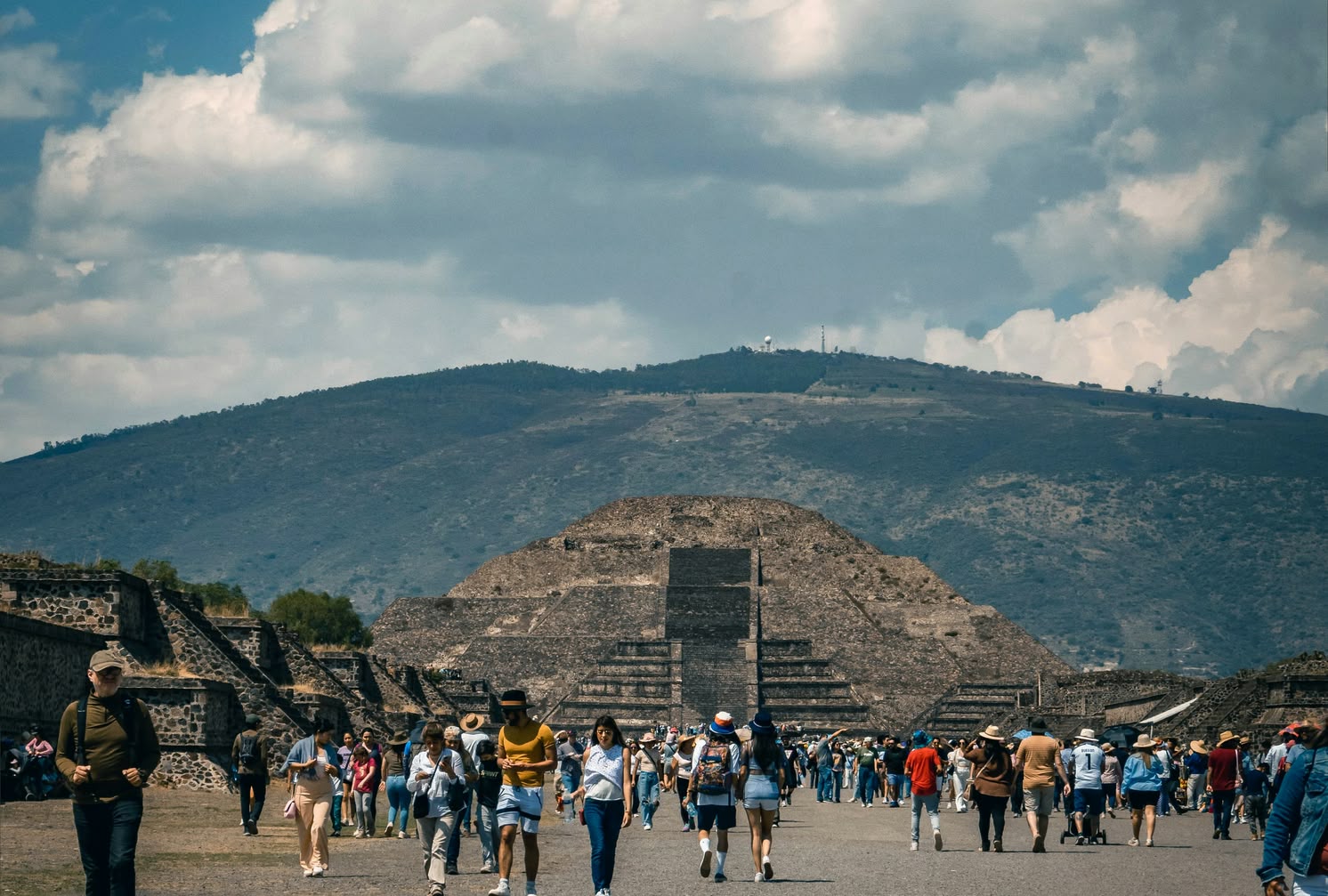
Mexiko Cities and the Sea
- Aztec ruins of Teotihuacán
- Magical villages of Puebla, Cholula and Atlixco
- Relax on the beaches of Playa del Carmen
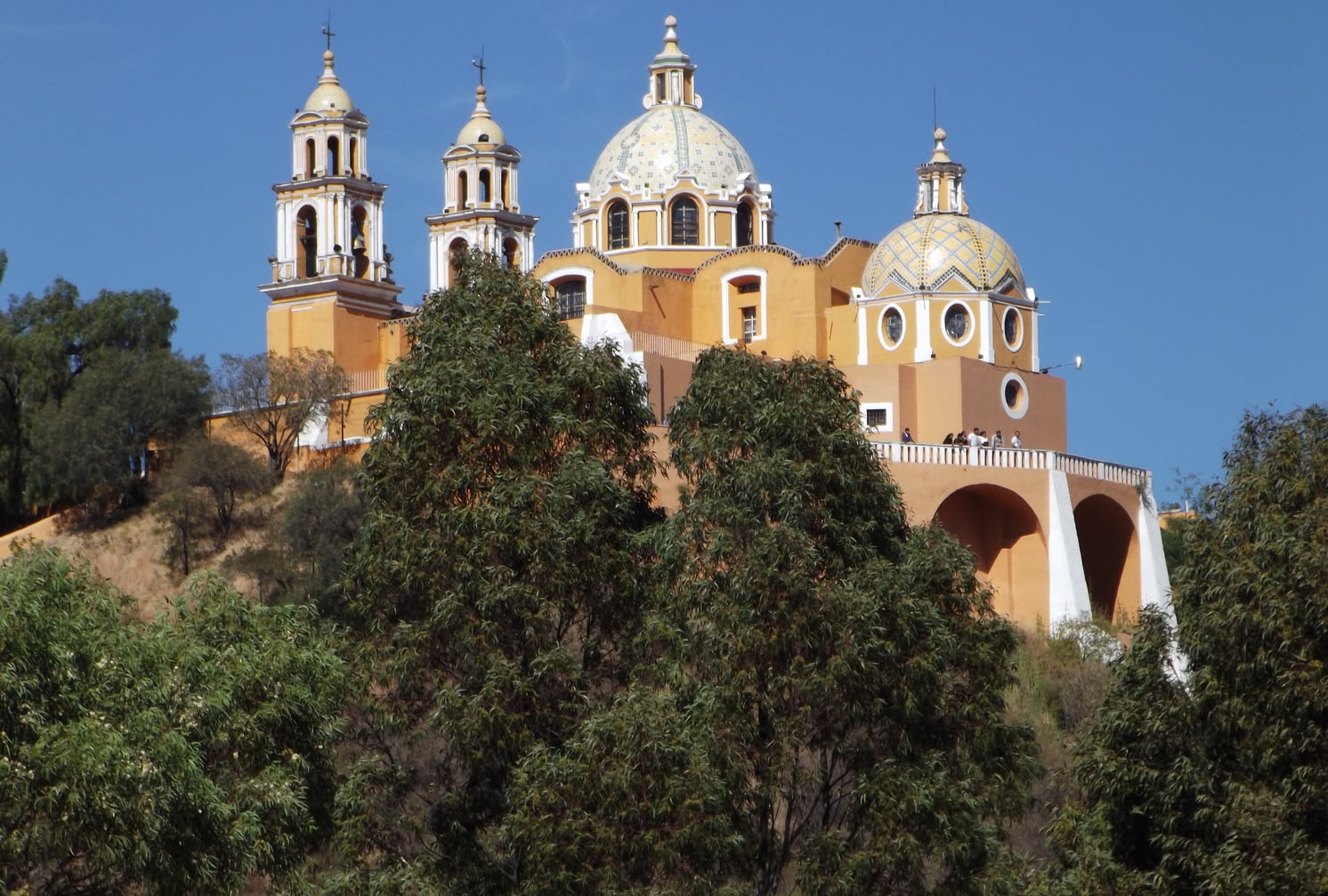
Traditional Mexico
- Hearty Mexican cuisine
- Ruins of Teotihuacán
- Magical villages of Cholula and Atlixco
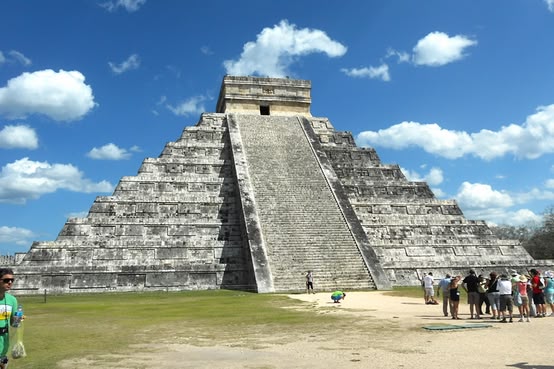
Architecture and construction
The architecture of the Mayan temples is characterised by massive pyramids, magnificent palaces and sophisticated urban complexes. The building style combines natural stone and stucco, with limestone often being used for temple construction. Typical features are the staircases leading to the temple platforms and the use of ornamentation and reliefs. The temples were not only religious sites, but also served as observatories for astronomical observations and as centres of power for the rulers.
Important temples and sites
Chichén Itzá, one of the most important centres of Mayan culture and a UNESCO World Heritage Site, flourished between the 7th and 10th centuries A.D. The historic city impresses with the large El Castillo pyramid and was known as an important political, economic and religious centre for its astronomical ceremonies and the complex Mayan cyclical calendar.
Cobá was an important Mayan ruins site that was inhabited from around 1st to 1000 AD. The city is known for its extensive network of roads that connected several Mayan centres. Nohoch Mul, the highest pyramid in the region, can be climbed and offers an impressive view over the jungle. Cobá also offers fascinating insights into Mayan architecture.
Palenque is considered one of the most impressive Mayan cities and is famous for its exquisite reliefs and well-preserved temples. The city flourished between 600 and 800 A.D. and today is particularly famous for the Temple of Inscriptions, which contains the tomb of the ruler Pakal. Palenque impressively conveys the complex culture of the Maya, from religion to architecture.
Teotihuacán was an important pre-Columbian centre that existed long before the Aztecs, but is often associated with their culture. The city, which flourished from the 1st to 7th century AD, is famous for the Pyramids of the Sun and Moon. The Aztecs later regarded Teotihuacán as sacred, and the huge structures are still evidence of its political and economic importance today.
Uxmal is a famous Mayan site and UNESCO World Heritage Site known for its magnificent Puuc-style architecture, which includes ornate stone decorations. The most important buildings, such as the Governor's Palace and the Nunn Temple, reflect the advanced architecture and complex social structure of the Maya and offer insights into their cultural life.
Tulum is a picturesque Mayan city on the Caribbean coast, known for its well-preserved temples and spectacular cliff-top location. This city was an important trading centre between 1200 and 1500 A.D. The famous Temple of Heracles was used for religious purposes and is a unique illustration of Mayan maritime culture.
Don't miss the chance to make your dream trip a reality! Contact our experienced travel consultants now and let them inspire and advise you for your trip. Take the first step towards your unforgettable adventure!
Religious practices
The Maya practised a polytheistic faith with numerous gods representing different aspects of life and nature. Religious ceremonies, often involving music, dance and offerings, took place in the temples. Priests played a central role as they led the rituals and acted as mediators between the gods and the people. Festivals and ceremonies were often linked to the agricultural cycle and served to seek the favour of the gods.
Art and carvings
Mayan art is characterised by complex carvings, murals and ceramics, which often depict mythological or historical scenes. Richly decorated reliefs depicting gods, rulers and important events can be found in the temples. These artistic representations had not only aesthetic but also religious significance and served as a means of communicating power and faith.
Visitor information
Visitors to the Mayan temples will find numerous opportunities to explore the fascinating sites.
Opening times vary depending on the location, although most temples are open daily. Entrance fees are usually between 5 and 20 US dollars, depending on the site. Guided tours are available to gain a deeper insight into the history and architecture. Recommended travel options include car, bus or organised tours, which often combine transport and guided tours.
Frequently asked questions - Maya Temple
Some of the most beautiful and impressive Mayan temples can be found at the following sites:
- Chichén Itzá (Mexico): The most famous temple is the Temple of Kukulkán (El Castillo), which is one of the Seven Wonders of the World.
- Palenque (Mexico): Famous for its ornate reliefs and the impressive architecture of the Temple of the Inscriptions.
- Uxmal (Mexico): The Temple of the Sorcerer is particularly known for its unique architecture and elaborate decorations.
- Cobá (Mexico): This is home to the largest Mayan pyramid, the Nohoch Mul, which visitors are allowed to climb.
- Tikal (Guatemala): Famous for its imposing temples, especially Temple I (Temple of the Great Jaguar).
The Maya built pyramids for several reasons:
- Religious Purposes: Pyramids often served as temples where gods were worshipped and ceremonies were held.
- Burial sites: Many pyramids were also royal tombs where rulers and important personalities were buried.
- Social and political symbolism: The pyramids represented the power and status of the Maya rulers and were often centres of social life.
There are hundreds of Mayan temples in Mexico, with major archaeological sites including Tikal, Chichén Itzá, Palenque, Uxmal and Coba. The exact number of temples varies depending on the source, but it is estimated that there are several thousand remains of Mayan structures, including temples, palaces and other buildings.
The largest city of the Mayan civilisation was Tikalwhich had a population of an estimated 100,000 to 200,000 people during its heyday in the 8th century AD. Tikal is known for its large pyramids, temples and palatial structures.
Walking and climbing on Mayan pyramids is restricted in many archaeological sites for several reasons:
- Protection of heritage sites: to protect the structures from wear and damage.
- Safety concerns: Many pyramids have steep steps that can be dangerous for visitors.
- Conservation measures: Sites should be preserved for future generations and access must be controlled to ensure the integrity of the ruins. In some cases, such as at Chichén Itzá, climbing the pyramids has been banned altogether due to damage and safety concerns.

This might also interest you
Culture and religion Mexico
Learn the most important facts about Mexico's diverse culture, characterised by indigenous traditions and Spanish heritage.
Nature Mexico
Discover Mexico's breathtaking nature - from dense rainforests and majestic mountains to crystal-clear cenotes and endless beaches.
Population and language
Immerse yourself in the vibrant culture of Mexico, where the warm-hearted people and the rhythmic Spanish language make up the pulsating heart of the country.

